
Třemešná ve Slezsku - Osoblaha
Railway Třemešná ve Slezsku - Osoblaha is situated in Silesia near Jeseníky Mountains, north of town Krnov.
The railway line connects Třemešná ve Slezsku (which lies on normal gauge railway No. 290 from Krnov to Jeseník via
Głuchołazy PKP) with Osoblaha near Czech-Polish frontier. Length of line is 20,218 km, maximum altitude is 385 m
above sea level, maximum gradient is 26 per mille (both in km 2,0), minimum radius of curve is 75 m and maximum
speed is 40 km/h (from the year 1991, primarly 30 km/h). Traffic is organized according to Czech Railways'
instructions D3 "Instructions for simplified organization of railway traffic". Train dispatcher in Třemešná ve
Slezsku is also the line dispatcher for this narrow gauge line.
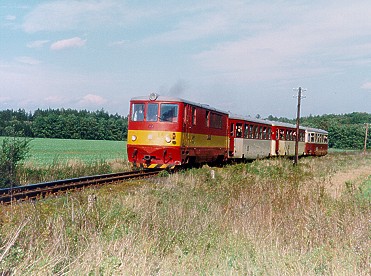 |
| 705.916 Slezské Rudoltice (photo Richard Lužný 10. 10. 1998). |
In 19th century the Osoblaha region was meaningful region. At the time of impetuous construction of railways, there
was begun to discuss about construction of local railway to this region. About the construction of the railway was
decided on 1895. There was decided, that the gauge of the track would be 760 mm, although local authorities wanted
normal (1435 mm) gauge railway.In 19th century the Osoblaha region was meaningful region. At the time of impetuous
construction of railways, there was begun to discuss about construction of local railway to this region. About the
construction of the railway was decided on 1895. There was decided, that the gauge of the track would be 760 mm,
although local authorities wanted normal (1435 mm) gauge railway.
The construction of the railway was started in spring 1898 (political errand took place from 11th till 15th October
1897), approval of railway took place 12.12.1898. 14.12.1898 the line was opened for regular public transport. First
train No. 2156 was hauled by engine U.14.
At the beginning on the line run three pairs of mixed trains. For simplfication of transloading there was used
trailers for normal gauge wagons.
20th December 1918 the line became a property of Czechoslovak State Railways (Československé státní dráhy - ČSD).
Long running times was shortened by using of new motor coaches (in 1928). Therefore there could be opened new stops
Amalín and Dubský Mlýn (Stop Dubský Mlýn was later renamed to Ostrá Hora and in 1972 became extinct). After German
annexation of Sudety the railway became under administration of German Empire Railway (Deutsche Reichsbahn - DR).
During World War II the line was no more destroyed, but about war-time traffic there wasn't saved almost any
information. In March 1945 there was railway traffic stoped. In 22nd March town Osoblaha was liberated, but festive
opening (after renovation) of railway traffic took place till 28.10.1945. There was also destroyed rolling stock.
Essential change in railway traffic was delivery of new diesel locomotive and after new passenger cars too. In this
way there occured to farewell with steam traction and original rolling stock.
The last big intervention to the railway's life was track reconstruction, which took place from 1985 till 1988.
During the reconstruction was dismantled the old track and it wassubstituted by new track with rails type S49
(49 kg/m) - with this rails we can meet rather at normal gauge railway lines.
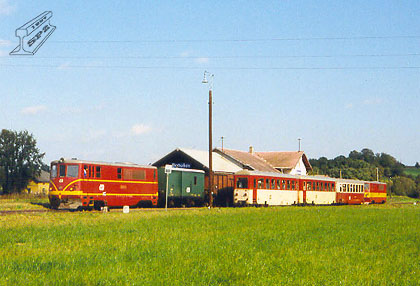 |
| 705.916 a 705.913 křižující v Bohušově (foto Daniel Brabenec 10. 10. 1998). |
At the beginning locomotive stock was composed from engines series U.13 - 15. The engines was manufactured in
locomotive works Krauss&Co. Linz (Austria) in September 1898. Test runs took place on Austrian
Ybbstalbahn where engine U.15 was in service also in year 1889. There
was also 4 coaches (series BCi 3, 4 and Ci 7, 8 - manufactured in wagon works Graz, Austria), 2 service coaches,
3 covered wagons, 4 open wagons and 4 four-wheel trailers for normal gauge wagons. Through the years 1915 and 1916
the reserve engine U.15 was rent to Austrian Military Railways (K. u. k Heeresbahn). After war this engine stayed
on Polish line Lupków - Cisna. After return to ČSD in 1929 the locomotive wandered to the Sub-Carpathian Ukraine
(in this time it was remarked to U37.010). As compensation engine series A.002 was in 1917 delivered (in 1924
remarked to U25.002). Engines U.13 and U.14 was after year 1924 remarked to U37.003 and U37.004. A big change in
passenger traffic was delivery of two motor coaches with one coach. This coaches was bought in wagon works Tatra
Kopřivnice in 1928. To regulary traffic this coaches was used from 2nd December 1928. In 1934 locomotive U37.004
came to Jindřichova Hradce. In 1935 U37.002 came to
Osoblaha from Ondrášov.
After the railway became under administration of Deutsche Reichsbahn (1938), the engines was remarked according to
marked custom of DR. U37.002 was remarked to 99.7841 and U37.002 to 99.7842. Motor coaches was remarked to CiVT
136.001 and 002. Motor coaches stock was completed by coach series CiVT 136.003 (M11.006), which came from
Gmünd locomotive shed (there it was allocated with the railway line
Jindřichův Hradec - Nová Bystřice. In spring 1944 four coaches came from Osoblaha to Austrian Steyrtalbahn. There
they was met engine U37.004 (this engine came to Steyrtalbahn through the war).
At the end of World War II the rolling stock was in bad condition. Therefore in 1946 motor coach M11.008 and steam
engine U38.001 came here from Jindřichův Hradec (engine U38.001 was originaly U32 in Zell am See, before World War
II in St. Pölten, during war as 99.7816 DR came to Jindřichův Hradec). Then two new motor coaches series M21.006
and 007 (manufactured in Tatra Kopřivnice) came to Osoblaha. This coaches ran from 12. 11. 1948. In 1948 motor coach
M11.007 came from Jindřihův Hradec.
Next shifting came in 1950: U37.002 came to Jindřichův Hradec. In November 1951 engine U37.003 came to
Ružomberok - Korytnica railway, but in July 1953 it came back.
The following steam locomotives here was also U58.001 and U47.003. Engine U47.003 came to Osoblaha from Jindřichův
Hradec (after coming of the first diesel engine series T47.0 to J. Hradec). Engine U58.001 came from
Frýdlant v Čechách - Heřmanice railway (this engine came to Frýdlant
during World War II and then stayed there).
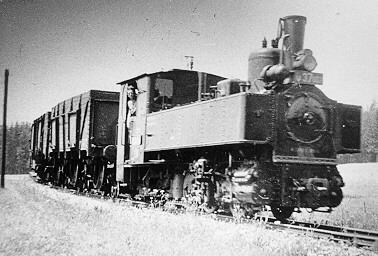 |
| 705.916 ve Slezských Rudolticích (archiv Václav Cempírek). |
Gradual modernization of rolling stock avoided not narrow gauge railways. In 1958 four new diesel engines series T47.0
(manufactured in ČKD Prague) came here. The first of this was T47.017, then came T47.013, 014 and 017. After
technic-security tests the locomotives started to run in regulary traffic and shortly they took here all of traction
over. The last steam train ran here on 16th December 1960 (hauled by U47.003).
Later motor coaches was disturbed: at the first series M11.O was disturbed. At the beginning of the sixties motor
coach M21.007 was sold to State Forests Žilina (and remarked to M21.006). In present time this motor coach is on
former forest railway in Liptovský Hrádok, Slovakia). Motor coach M21.006 was rebuilt to passenger coach series
Ba/ú 619.
Next change in rolling stock took place in 1964: six new service brake wagons series D/ú came here and in the next
year 60 trailers for normal gauge wagons came. The coach stock was renewed in spring 1966, when five bogie passenger
coaches series Balm/ú came from Tatra Smíchov works. Next four coaches series Balm/ú came in 1975 from liquidated
Slovak narrow gauge line Ružomberok - Korytnica. Therefore in Osoblaha original coaches was disturbed. To the present
time the passenger coach stock is almost without changes.
Also locomotive stock is almost without changes. In the case of requirement the locomotives was lent from Jindřichův
Hradec (TU47.011, 015 and 019). Only the marking was changed: first of all from T47.0 to TU47.0 and in 1988 to 705.9.
But at half of 1997 engine 705.911 came here from Jindřichův Hradec (after repair in Šumperk railway works). In
January 1998 the engine was came back to Jindřichův Hradec (in that time the Jindřichův Hradec narrow gauge railways
belonged to private Jindřichův Hradec Local Railways, Jnt. Stk. - JHMD). Therefore engine 705.917 was saved (it was
proposed to liquidate). Locomotives 705.914 and 916 - which was long-termly put out of operation - was also repaired.
In present time locomotives 705.913, 914 and 916 are in operation and engine 705.917 is long-termly out of oparation
(it stays in Třemešná).
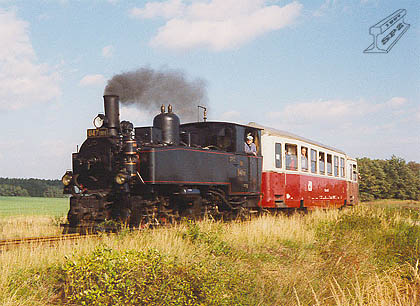 |
| U 47 001 Slezské Rudoltice zvláštní vlak k 100. výročí trati (foto Richard Lužný 10. 10. 1998) |
Goods traffic was ended in 1997. But in rolling stock service brake wagons and 30 trailers for normal gauge wagons
are stayed.
In spite of various troubles and efforts to liquidation (from Ministry of Transport and leaders of Czech Railways
- ČD) this picturesque local railway survives to present time. Now it is only narrow gauge railway of ČD.
In 10th and 11th October 1998 100th anniversary of this railway celebrated here. On this occasion locomotive U47.001
with historic set of coaches from Jindřichův Hradec showed up here. At first day of celebration also extraordinary
mixed train ran here.
Text Daniel Brabenec
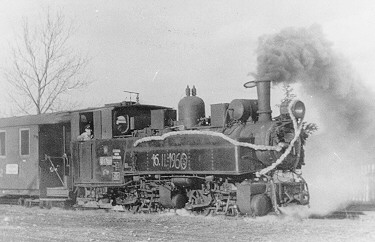 |
| U 37 |
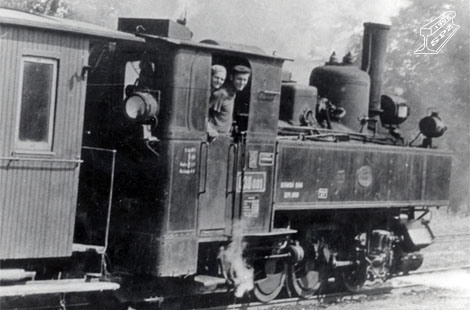 |
| U 37 |
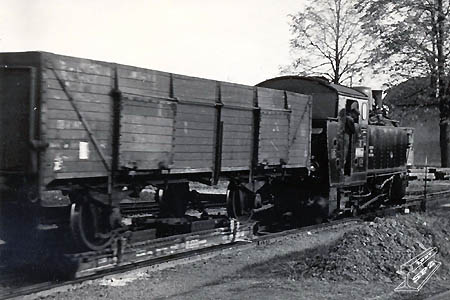 |
| U 58.001 u Osoblahy (foto archiv Václav Cempírek 22. 10. 1955) |
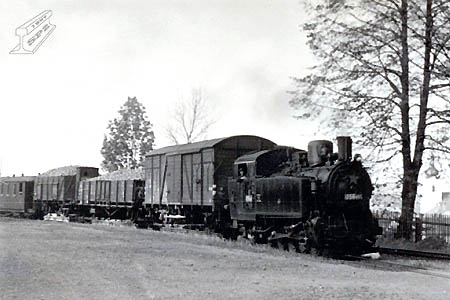 |
| U 58.001 v Osoblaze (foto archiv Václav Cempírek 22. 10. 1955) |
| Map of railway Literature |